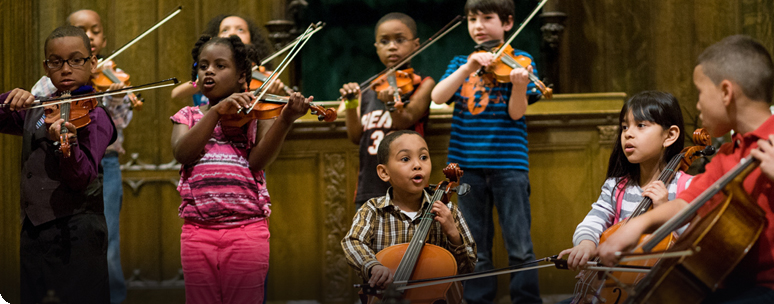Teacher Training: Annalisa on Lorrie Heagy’s LevelsI am so jealous of great video game design. When you’re playing a well-made game, you don’t want to take a break after clearing a level/beating a boss/whatever it is that you achieve in first-person shooters. You dive right into the next mission. It’s as natural as breathing. How revolutionary would it be if we could design musical learning in the same way? Luckily for us, the legendary Lorrie Heagy of Juneau Alaska Music Matters (JAMM) had the same thought, and was willing to share her strategy of “levels” with the CMW teachers in a training for staff this past semester. It’s so elegant. As teachers, we’re already breaking down our students’ work into manageable chunks. Unfortunately, baby steps don’t always feel fun… until, somehow, we transform them by referring to them as levels. It’s like magic. My student Victor came in to his lesson this week chattering about video games, as is his way. Here was the perfect candidate for levels. We started working on our piece for the day – a folk song called “Go, Tell Aunt Rhody.” I challenged him to Level 1: clapping and counting out the rhythm. He cleared it with ease. Level 2 was a pizzicato (plucking the string) level. Level 3 involved our first upgrade (!), a “proud violin.” (This is a phrase I regularly use to describe a violin that’s being held high with good posture.) Victor struck the pose he imagined his game character would make when receiving an upgrade and sang a brief victory tune. I told him that his new proud violin had much better stats than the regular violin. We were totally in business. The next Level (4) was a puzzle – he upgraded his pizzicato to a violin bow, and had to play the piece’s rhythms on open strings without the use of his left hand fingers. (A little extra processing is involved there.) Finally, we had made it to the Boss Level, Level 5, which involved playing the music as written with bow, fingers, rhythm, and everything. (Victor burst into dramatic boss music to set the scene.) We rolled the dice that I keep in my case to determine how many lives he had – how many chances he would have to clear the level. Uh-oh: he rolled a three. Not many chances. But! He focused a little extra on each repetition – just as any reasonable person would when he or she is running out of lives – and after two incomplete battles with “Aunt Rhody” (resulting, of course, in “deaths and respawns”) Victor beat that Boss Level. It was a great lesson. Lorrie’s beautiful motivational tool tapped into a social construct that my students and I both associate with an addicting mode of work and achievement. I’m considering adding a classic Sonic the Hedgehog soundtrack next week. Now that my students are on board, I suppose it’s time to figure out some levels for myself. Here’s hoping I get addicted to practicing – because I can’t stop repeating that familiar refrain, “just one more level and then I’ll be done for the day. Just one more level.” -Annalisa Boerner -photo by Jori Ketten Read an interview with Lorrie Heagy here.
|
